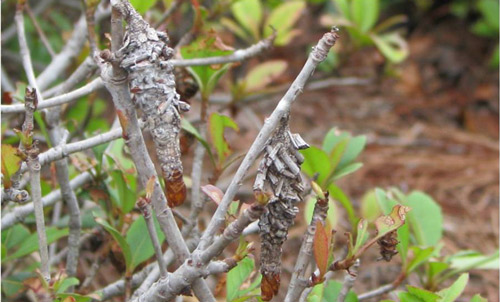Bagworms

Bagworms received their name because of the "bag" they create around themselves to camouflage themselves from predators. This bag is made from silk they spin and small pieces of leaves they collect to protect themselves from predators. Young larvae hatch typically in mid-May and leave the bag they hatched from to find foliage to start eating. Larvae usually feed on the plant they hatched on or one nearby, but they can be carried to other plants via the wind and a long silk thread. Bagworms will eat almost any plant but prefer junipers or arborvitae. These insects usually go unnoticed until their bags are 1-2" in size and hang from the plant like little Christmas ornaments.
The best control is achieved by starting control measures two weeks after the insects have begun to hatch to ensure all the larvae are feeding, which means we usually can start spraying around the end of May to the mid to latter half of June. Several active ingredients can be used to kill bagworms, including Spinosad, permethrin, acephate, and cyfluthrin. Be sure to thoroughly cover all the foliage with the spray to kill the bagworms. Unfortunately, no systemic insecticide on the market is effective at controlling bagworms; the only control option currently available is spraying the tree's foliage. Suppose you overlook the bagworms till August, when they are larger. In that case, it's best to pick as many bagworms off as possible and discard them since chemical applications at that point are usually unsuccessful.

Have questions? Contact our office where our Horticulture Extension Agent will assist you with questions.
Phone: (316) 321-9660
Email: callae@ksu.edu